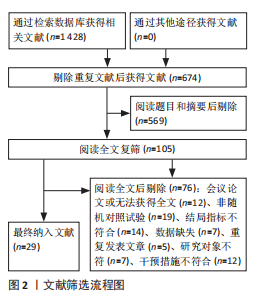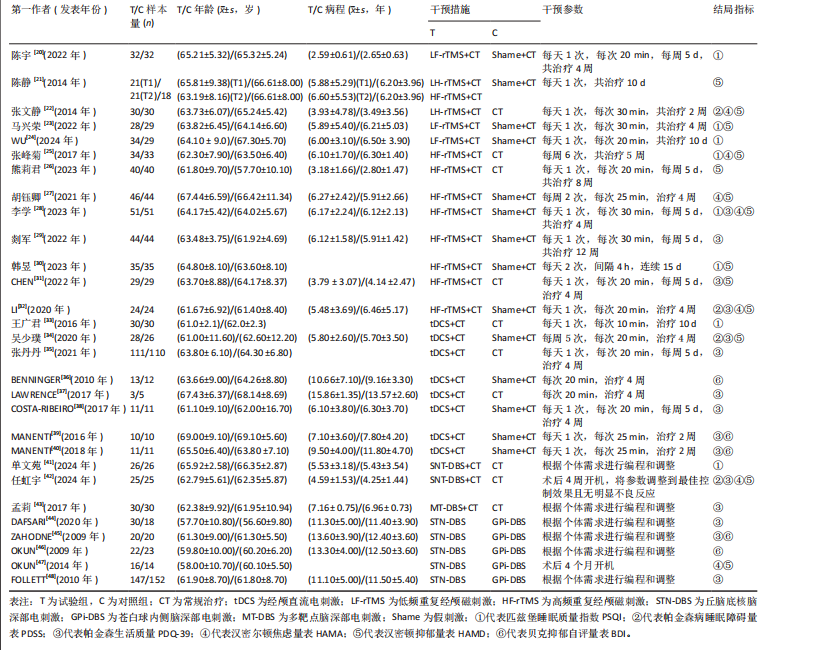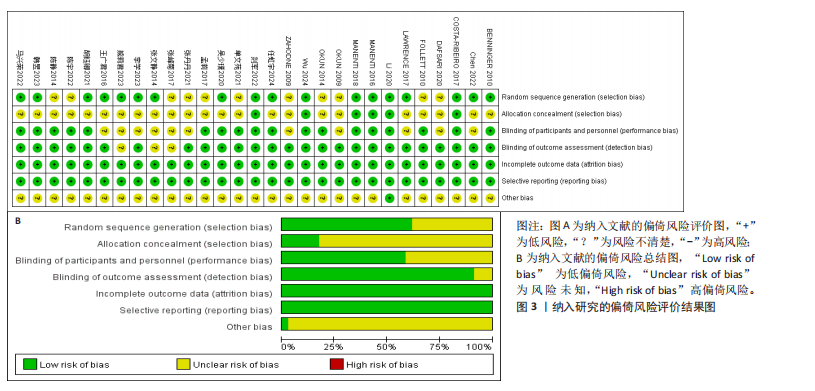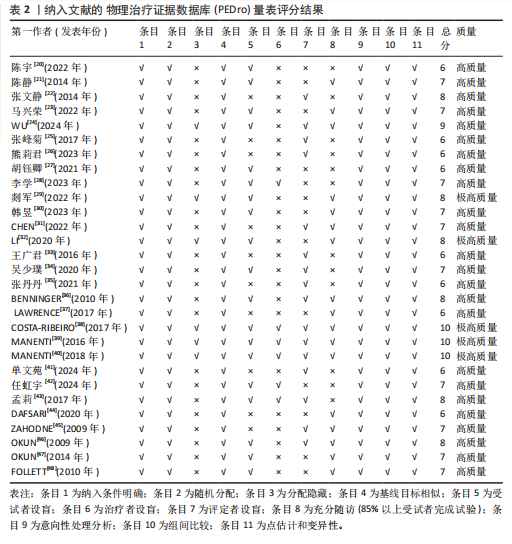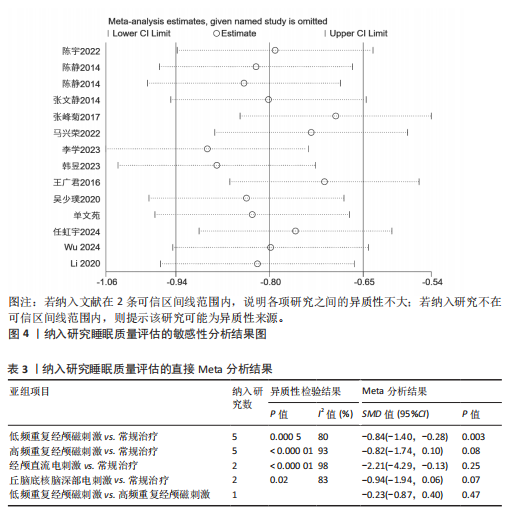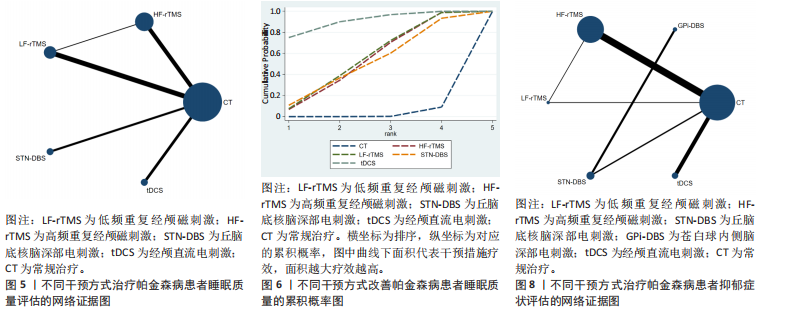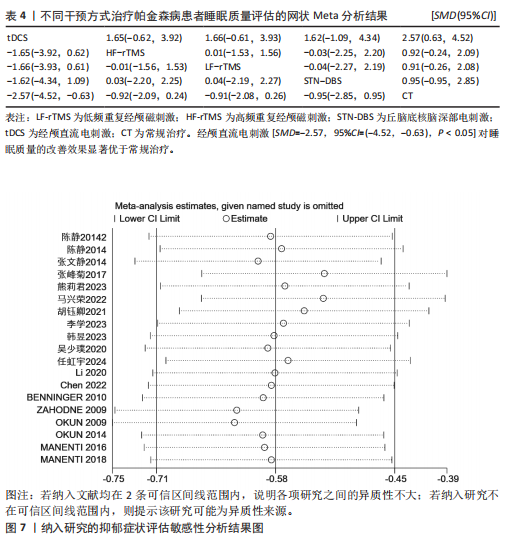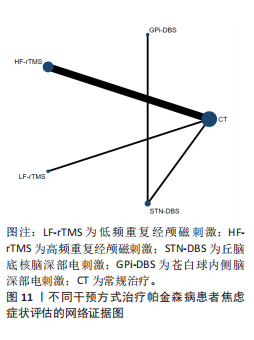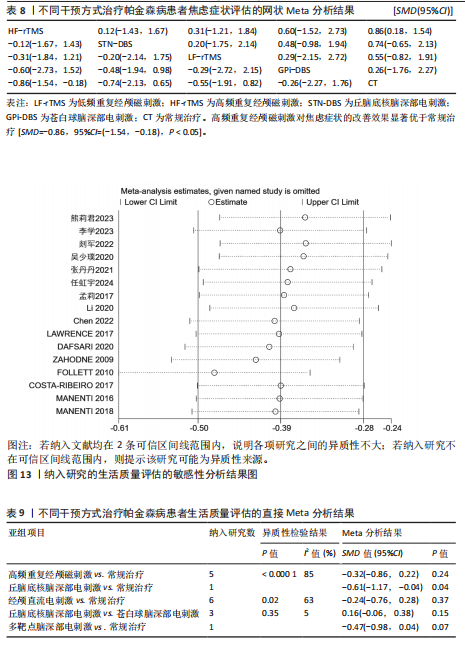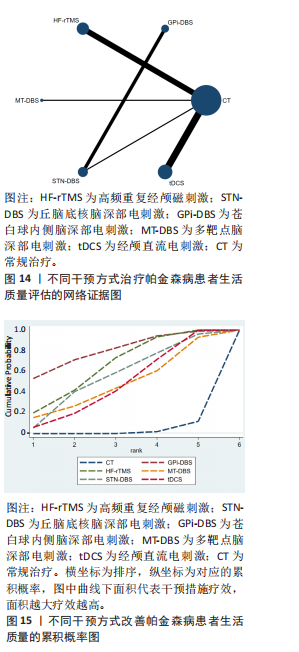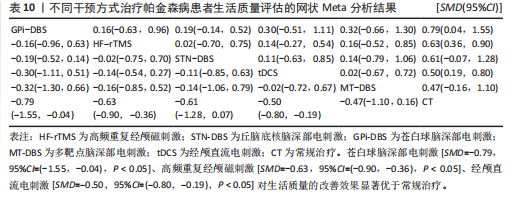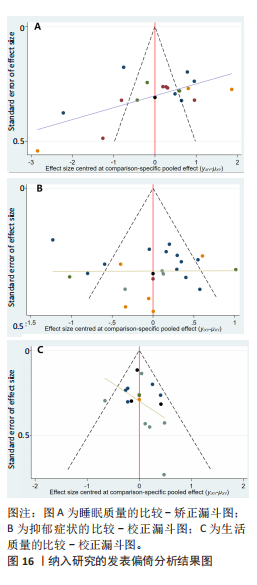[1] MORRIS HR, SPILLANTINI MG, SUE CM, et al. The pathogenesis of Parkinson’s disease. Lancet. 2024;403(10423):293-304.
[2] 王坚,邬剑军,常颖,等.中国帕金森疾病蓝皮书[J].中国临床神经科学,2024,32(S1):1-41.
[3] HAYES MT. Parkinson’s Disease and Parkinsonism. Am J Med. 2019;132(7):802-807.
[4] STEFANI A, HÖGL B. Sleep in Parkinson’s disease. Neuropsychopharmacology. 2020; 45(1):121-128.
[5] AHMAD MH, RIZVI MA, ALI M, et al. Neurobiology of depression in Parkinson’s disease: Insights into epidemiology, molecular mechanisms and treatment strategies. Ageing Res Rev. 2023;85: 101840.
[6] PONTONE GM, MILLS KA. Optimal Treatment of Depression and Anxiety in Parkinson’s Disease. Am J Geriatr Psychiatry. 2021;29(6):530-540.
[7] MÜLLER B, ASSMUS J, HERLOFSON K, et al. Importance of motor vs. non-motor symptoms for health-related quality of life in early Parkinson’s disease. Parkinsonism Relat Disord. 2013;19(11):1027-1032.
[8] 司慧丽,纪别克,赵鸿雁,等.帕金森病患者睡眠障碍特点及其影响因素分析[J].广东医学, 2020,41(1):61-65.
[9] PARPURA V, SILVA GA, TASS PA, et al. Neuromodulation: selected approaches and challenges. J Neurochem. 2013;124(4):436-453.
[10] 解虎涛,张建国.神经调控技术的过去、现在和未来[J].四川大学学报(医学版),2022, 53(4):559-563.
[11] FOLTYNIE T, BRUNO V, FOX S, et al. Medical, surgical, and physical treatments for Parkinson’s disease. Lancet. 2024;403(10423):305-324.
[12] LEE JY, KIM SH, KO AR, et al. Therapeutic effects of repetitive transcranial magnetic stimulation in an animal model of Parkinson’s disease. Brain Res. 2013;1537:290-302.
[13] DAGAN M, HERMAN T, HARRISON R, et al. Multitarget transcranial direct current stimulation for freezing of gait in Parkinson’s disease. Mov Disord. 2018;33(4):642-646.
[14] FAN SY, WANG KL, HU W, et al. Pallidal versus subthalamic nucleus deep brain stimulation for levodopa-induced dyskinesia. Ann Clin Transl Neurol. 2020;7(1):59-68.
[15] CHEN T, LIN F, CAI G. Comparison of the Efficacy of Deep Brain Stimulation in Different Targets in Improving Gait in Parkinson’s Disease: A Systematic Review and Bayesian Network Meta-Analysis. Front Hum Neurosci. 2021;15:749722.
[16] POL F, SALEHINEJAD MA, BAHARLOUEI H, et al. The effects of transcranial direct current stimulation on gait in patients with Parkinson’s disease: a systematic review. Transl Neurodegener. 2021;10(1):22.
[17] 黄木兰,王丽萍,胡柯嘉,等.非侵入式脑刺激对帕金森病患者执行功能的影响:网状meta分析[J].海军军医大学学报,2024,45(5):584-591.
[18] 张振馨.帕金森病的诊断[J].中华神经科杂志, 2006,39(6):408-409.
[19] 曹武婷,朱毅.循证物理治疗的推动者:物理治疗证据数据库PEDro[J].中国康复理论与实践, 2021,27(3):368-372.
[20] 陈宇,赵静,万志荣,等.低频重复经颅磁刺激治疗帕金森病焦虑失眠的疗效分析[J].神经损伤与功能重建,2022,17(8):449-451+475.
[21] 陈静,张长国,张红波,等.高频与低频重复经颅磁刺激治疗帕金森病的临床观察[J].中国康复医学杂志,2014,29(5):464-467.
[22] 张文静,聂坤,张玉虎,等.重复经颅磁刺激治疗帕金森病失眠患者的效果观察[J].护理学报, 2014,21(23):28-30.
[23] 马兴荣,刘希,任幼红,等.右侧前额叶背外侧区低频重复经颅磁刺激对帕金森病非运动症状的疗效[J].中国实用神经疾病杂志,2022, 25(3):289-294.
[24] WU J, ZHUANG S, ZHANG X, et al. Objective sleep enhancement in Parkinson’s disease: A sham-controlled trial of low-frequency repetitive transcranial magnetic stimulation over the right dorsolateral prefrontal cortex. Parkinsonism Relat Disord. 2024;126:107050.
[25] 张峰菊,王晓雪,刘欣欣.重复经颅磁刺激联合认知行为疗法对帕金森病非运动症状的疗效[J].中国实用神经疾病杂志,2017,20(9):61-63.
[26] 熊莉君,杨燕,王芳.重复经颅磁刺激联合心理干预治疗帕金森病抑郁患者的疗效观察[J]. 中华物理医学与康复杂志,2023,45(4):312-316.
[27] 胡钰卿,刘振国,叶青,等.熟地平颤方联合重复经颅磁刺激治疗帕金森病合并睡眠障碍临床研究[J].中国中医药信息杂志,2021,28(5):88-93.
[28] 李学,陈思远,吴少璞,等.重复经颅磁刺激对中晚期帕金森病患者睡眠及血浆食欲素-A含量的影响[J].中华物理医学与康复杂志,2023, 45(3):232-235.
[29] 剡军,王永正,赖彩琼.高频rTMS治疗帕金森病伴白天过度嗜睡的临床疗效及与弥散张量成像的相关性研究[J].中国康复,2022,37(10):592-597.
[30] 韩昱,白抚生,张顺,等.高频重复经颅磁刺激治疗帕金森病非运动症状的疗效观察[J].中国实用内科杂志,2023,43(4):318-321.
[31] CHEN J, XU P, GUO X, et al. Comparative Analysis of the Effects of Escitalopram, Pramipexole, and Transcranial Magnetic Stimulation on Depression in Patients With Parkinson Disease: An Open-Label Randomized Controlled Trial. Clin Neuropharmacol. 2022; 45(4):84-88.
[32] LI J, MI TM, ZHU BF, et al. High-frequency repetitive transcranial magnetic stimulation over the primary motor cortex relieves musculoskeletal pain in patients with Parkinson’s disease: A randomized controlled trial. Parkinsonism Relat Disord. 2020;80:113-119.
[33] 王广君,赵振华,吴东川,等.经颅直流电刺激对帕金森病非运动症状的疗效[J].中国医药导报,2016,13(5):75-78.
[34] 吴少璞,李学,祁亚伟,等.经颅直流电刺激对伴快速眼动睡眠行为障碍-帕金森病患者睡眠障碍的影响[J].中华物理医学与康复杂志, 2020,42(1):50-54.
[35] 张丹丹,毛洁萍.重复经颅直流电刺激对于PD患者躯干肌电特征、步行功能及生存质量的影响[J].中华保健医学杂志,2021,23(5):465-468.
[36] BENNINGER DH, LOMAREV M, LOPEZ G, et al. Transcranial direct current stimulation for the treatment of Parkinson’s disease. J Neurol Neurosurg Psychiatry. 2010;81(10):1105-1111.
[37] LAWRENCE BJ, GASSON N, BUCKS RS, et al. Cognitive Training and Noninvasive Brain Stimulation for Cognition in Parkinson’s Disease: A Meta-analysis. Neurorehabil Neural Repair. 2017;31(7):597-608.
[38] COSTA-RIBEIRO A, MAUX A, BOSFORD T, et al. Transcranial direct current stimulation associated with gait training in Parkinson’s disease: A pilot randomized clinical trial. Dev Neurorehabil. 2017; 20(3):121-128.
[39] MANENTI R, BRAMBILLA M, BENUSSI A, et al. Mild cognitive impairment in Parkinson’s disease is improved by transcranial direct current stimulation combined with physical therapy. Mov Disord. 2016;31(5):715-724.
[40] MANENTI R, COTELLI MS, COBELLI C, et al. Transcranial direct current stimulation combined with cognitive training for the treatment of Parkinson Disease: A randomized, placebo-controlled study. Brain Stimul. 2018;11(6):1251-1262.
[41] 单文苑.双侧丘脑底核脑深部电刺激术对帕金森病患者睡眠质量及非运动症状的影响[J].中文科技期刊数据库(全文版)医药卫生,2024, 11(4):118-121.
[42] 任虹宇,马俊,何森,等.丘脑底核脑深部电刺激术治疗帕金森病患者的疗效及术后认知功能分析[J].中国实用神经疾病杂志,2024,27(4):448-452.
[43] 孟莉,郑德利,刘娜,等.脑深部电刺激术联合药物治疗原发性帕金森病疗效观察[J].中国现代神经疾病杂志,2017,17(2):121-126.
[44] DAFSARI HS, DOS SANTOS GHILARDI MG, VISSER-VANDEWALLE V, et al. Beneficial nonmotor effects of subthalamic and pallidal neurostimulation in Parkinson’s disease. Brain Stimul. 2020;13(6): 1697-1705.
[45] ZAHODNE LB, OKUN MS, FOOTE KD, et al. Greater improvement in quality of life following unilateral deep brain stimulation surgery in the globus pallidus as compared to the subthalamic nucleus. J Neurol. 2009;256(8):1321-1329.
[46] OKUN MS, FERNANDEZ HH, WU SS, et al. Cognition and mood in Parkinson’s disease in subthalamic nucleus versus globus pallidus interna deep brain stimulation: the COMPARE trial. Ann Neurol. 2009;65(5):586-595.
[47] OKUN MS, WU SS, FAYAD S, et al. Acute and Chronic Mood and Apathy Outcomes from a randomized study of unilateral STN and GPi DBS. PLoS One. 2014;9(12):e114140.
[48] FOLLETT KA, WEAVER FM, STERN M, et al. Pallidal versus subthalamic deep-brain stimulation for Parkinson’s disease. N Engl J Med. 2010;362(22):2077-2091.
[49] 王辰,朱玉连,王卫宁.神经调控技术在帕金森病冻结步态中的应用现状及进展[J].中国康复医学杂志,2024,39(7):1068-1074.
[50] LIONNET A, LECLAIR-VISONNEAU L, NEUNLIST M, et al. Does Parkinson’s disease start in the gut? Acta Neuropathol. 2018;135(1):1-12.
[51] MONTI JM, MONTI D. The involvement of dopamine in the modulation of sleep and waking. Sleep Med Rev. 2007;11(2):113-133.
[52] MIZRAHI-KLIGER AD, KAPLAN A, ISRAEL Z, et al. Basal ganglia beta oscillations during sleep underlie Parkinsonian insomnia. Proc Natl Acad Sci U S A. 2020;117(29):17359-17368.
[53] FILMER HL, DUX PE, MATTINGLEY JB. Applications of transcranial direct current stimulation for understanding brain function. Trends Neurosci. 2014;37(12):742-753.
[54] SABÉ M, HYDE J, CRAMER C, et al. Transcranial Magnetic Stimulation and Transcranial Direct Current Stimulation Across Mental Disorders: A Systematic Review and Dose-Response Meta-Analysis [published correction appears in JAMA Netw Open. 2024;7(7):e2424292.
[55] BEGEMANN MJ, BRAND BA, ĆURČIĆ-BLAKE B, et al. Efficacy of non-invasive brain stimulation on cognitive functioning in brain disorders: a meta-analysis. Psychol Med. 2020;50(15):2465-2486.
[56] MERZAGORA AC, FOFFANI G, PANYAVIN I, et al. Prefrontal hemodynamic changes produced by anodal direct current stimulation. Neuroimage. 2010;49(3):2304-2310.
[57] 袁德智,胡洁,赵秋叶,等.帕金森病进展速度与抑郁、睡眠障碍的相关性分析[J].中国医科大学学报,2020,49(4):326-330.
[58] LI J, ZHU BF, GU ZQ, et al. Musculoskeletal Pain in Parkinson’s Disease. Front Neurol. 2022;12: 756538.
[59] GREENHOUSE I, GOULD S, HOUSER M, et al. Stimulation at dorsal and ventral electrode contacts targeted at the subthalamic nucleus has different effects on motor and emotion functions in Parkinson’s disease. Neuropsychologia. 2011; 49(3):528-534.
[60] 梁秦川,高国栋,王学廉,等.丘脑底核脑深部电刺激治疗帕金森病合并抑郁障碍的长期疗效[J].中华神经医学杂志,2006,5(11):1129-1131.
[61] STEFANI A, TRENDAFILOV V, LIGUORI C, et al. Subthalamic nucleus deep brain stimulation on motor-symptoms of Parkinson’s disease: Focus on neurochemistry. Prog Neurobiol. 2017;151:157-174.
[62] FAGGIANI E, DELAVILLE C, BENAZZOUZ A. The combined depletion of monoamines alters the effectiveness of subthalamic deep brain stimulation. Neurobiol Dis. 2015;82:342-348.
[63] 陈普建,韩睿,周春英,等.苍白球内侧部脑深部电刺激治疗对帕金森病患者运动功能和抑郁的疗效[J].解放军预防医学杂志,2019,37(3):136-137.
[64] 孔祥薇,康思敏,商慧芳,等.脑深部电刺激对帕金森病抑郁影响的网状Meta分析[J].华西医学,2023,38(3):416-423.
[65] BIRCHALL EL, WALKER HC, CUTTER G, et al. The effect of unilateral subthalamic nucleus deep brain stimulation on depression in Parkinson’s disease. Brain Stimul. 2017;10(3):651-656.
[66] 董震,张云淑,吴涵,等.功能磁共振引导下的重复经颅磁刺激对抑郁症短期疗效和执行功能的影响[J].河北医药,2022,44(8):1156-1159.
[67] 郑秀琴,于苏文,何益民,等.高频重复经颅磁刺激对帕金森病患者临床症状及其细胞衰老相关因子的影响[J].中华物理医学与康复杂志, 2022,44(5):427-432.
|
